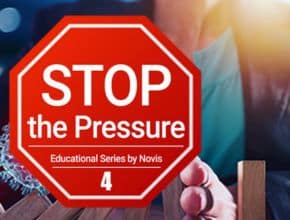Pressure Injuries? We’ve Got You Covered!

When it comes to pressure injuries, having the right equipment is essential in preventing and treating such unpleasant sores.
We understand that every patient is unique, so we have a range of various products to meet all of your patient’s needs. Using your patient’s Risk Assessment Score, you can determine what preventative equipment best suits your patient’s care. The following table lists which equipment may be recommended for each patient risk category:
Note: To calculate your patient’s risk assessment score, please refer to the Waterlow Assessment. Scores can also be determined using the Norton, Braden, and Glamorgan assessments for additional clarification.
| Patient Risk Category | Recommended Equipment |
| Low to Moderate/Medium | Mattresses: AreaCare, CairMax, CairMax Duo, BetterLiving APOCushions: EquaGel Cushion |
| Moderate/Medium to High | Mattresses: ProCair, ProCair Prime, CairMax Duo, BetterLiving Mattress ReplacementCushions: EquaGel Cushion, STAR Galaxy Cushion |
| High to Very High | Mattresses: ProCair Plus, ProCair QuadCushions: STAR Air Cell CushionAccessories: HeeLift Elevation Suspension Boot |
The ProCair Plus and ProCair Quad Alternating Mattress Replacement Systems are the premium solution for moderate-high and very high-risk patients. The mattresses are equipped with the following features:
AutoCair: automatically measures a patient’s weight and adjusts the pressure range for safe support
ActivCair: alternating cell system used to relieve pressure and encourage healing
HeelCair: independent heel zone designed with narrow cells for increased protection
SafetyCair: fully inflated back-up cell which provides increased stability and safety
ClimateCair: cells are constructed out of thermoplastic polyurethane for enhanced heat retention
CairAlert: allows for caregivers and physicians to be alerted when the patient has left the bed
FailSafe: inbuilt back-up battery for additional reassurance
AcuteCair: fully sealed base, designed to reduce the risk of bacterial contamination
But that’s not all! The features of the ProCair Plus and ProCair Quad Alternating Mattress Replacement Systems continue – for a full list of all that this product has to offer, click here.
Next up, the EquaGel Cushion is ideal for patients with mild to moderate cushioning needs. Its contoured pelvic area allows for equalized pressure redistribution. This waterproof, flame retardant, vapour permeable cushion cover is also outfitted with hook-and-loop sections for optimal wheelchair security and functionality.
For higher risk patients, the STAR Air Cell Cushion provides the maximum level of therapeutic prevention. This cushion uses patented technology in which airflow can be restricted between cells to allow for custom fitting, according to the user’s positioning and stability needs. The STAR Air Cell Cushion is available in numerous sizes, however, the 13 cm cell height is recommended for patients with severe atrophy. The STAR Air Cell cushion improves stability, without reducing the user’s mobility.
The HeeLift Boot makes for the perfect addition to your patient’s preventative care regimen. This boot protects the entire heel using medical grade convoluted (i.e. eggshell) foam. The intricate design yields little to no shearing or friction and is intended for easy repositioning.

Pressure Injuries are highly preventable but extremely difficult to treat. Novis is dedicated to help stop the pressure injury from (re)occurring.
This “Stop the Pressure” educational series, ebook, and an additional presentation, are prepared based upon the Clinical Practice Guideline for the Prevention and Management of Pressure Injury 2019.
References:
Australian Commission on Safety and Quality in Health Care. Safety and Quality Improvement Guide Standard 8: Preventing and Managing Pressure Injuries (October 2012). Sydney: ACSHQC; 2012. (June 2017).
Clinical Excellence Commission (AU). Pressure Injury Prevention Project. (Accessed June 2017)
Miles SJ, Fulbrook P, Nowick T, Franks C. Decreasing pressure injury prevalence in an Australian general hospital: A 10-year review. Wound Practice & Research: Journal of the Australian Wound Management Association 2013;21:148–56
Australian Commission on Safety and Quality in Health Care. National Safety and Quality Health Service Standards (second edition). Sydney 2017
Australian Wound Management Association. Pan Pacific Clinical Practice Guideline for the Prevention and Management of Pressure Injury 2019
 | Written by Kaleigh H. Wellhofer B.S. Clinical Neuroscience, B.S. Psychology |
Kaleigh studied Clinical Neurosciences and Psychology at Virginia Tech, in the United States, with an additional minor in Professional & Technical Writing. She spent two years at the Carilion Research Institute, studying potential treatment options for acquired epilepsy. During that time, Kaleigh presented her research at various conferences worldwide. She then went on to volunteer as a medical outreach professional in rural areas of Cambodia, where she oversaw the development of mobile medical clinics, taught oral hygiene in local schools, and assisted doctors with patient care. Back in the States, she has worked for major pharmaceutical companies, private practices, and research establishments as both a clinical consultant and a technical writer.
